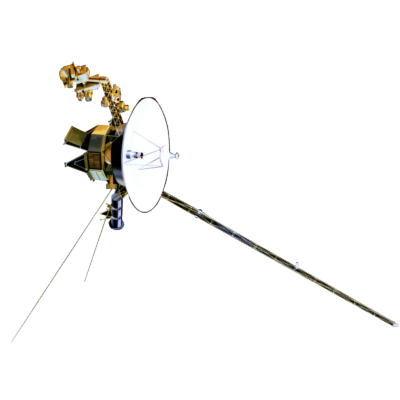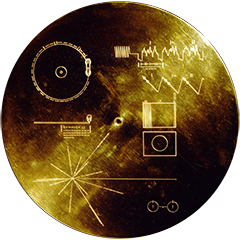Voyager LECP Data Analysis Handbook
Calibrations and Channel Definitions
The Voyager (MJS) LECP Pulse Height Analyzer (PHA)
Appendix A - PHA Test Set
A special test set is available which allows fast verification of the accuracy and resolution of the PHA in a semi-automated manner. A digital servo loop is used to measure each major bit of the A to D converter. Precision of each bit may readily be observed with a standard digital voltmeter while monotonic progression of the calibration is displayed on an oscilloscope in the region of each major bit. Thereby, one photograph and ten recorded numbers (using a 4 1/2 place or better DVM) completely characterizes the flight hardware for accuracy and resolution. The unit also provides visual decimal readout for all four channels and may be continuously operated at any desired point (using its internal adjustable drive voltage or eternal precision supplies) for test or trouble-shooting.
The PHA Test Set performs the following functions:
- Simulates the LECP experiment COMMAND AND DATA
ASSEMBLY.
- Provides "GO" pulses (variable from about 2 to 4 OmSec PRP).
- Provides "CLOCK" pulses (variable 12 to 27 uSec period).
- Has toggle switch control for:
LEPT/LEMPA select
D1/D2 select
CAL/NORM operation
Power to #1 or #1 PHA - Accepts PHA outputs:
DATA
A
B
OUTPUT TIME
BUSY
- Converts the binary count out of each of the four PHA time sequenced channels to a BCD signal and displays the resulting decimal number using four LED arrays.
- Features a digital servo loop to drive an output
analog voltage that can be connected to any desired PHA
input. This allows:
- Automatic lockin to within 1/4 bit of any desired bit for calibration using an external DVM.
- Automatic scan of all 10 bits with 1/4 bit dither increments modulating the output analog voltage. Scope horizontal and vertical display drives are available to allow visual analog presentation of the calibration within ±2 bits of each major bit. This provides an easy test and photographic record of the most likely points for error in monotonic progression of the scale.
- Loop may be disabled and its output circuitry used as a precision voltage reference. Helipot panel control allows a range of about zero to 11 volts.
- Provides oscilloscope monitor outputs for the Data and Timing signals. Generates a Trigger pulse to allow sweep synchronization on the leading edge of the first Output Time interval, thus circumventing the jitter possible due to 1 clock interval uncertainty in PHA initiation ("GO" signal being asynchronous to the clock).
The tester is illustrated by the two block diagrams, Figure A-1, "PHA Test Set Timing and Data Presentation" and Figure A-2, "PHA Test Set Digital Servo Control Loop." The timing and Data sections of the circuitry can stand alone and may be used to build a PHA readout device if desired. The Digital Servo Control Loop requires inputs from the Timing and Data sections for closed loop operation, but may be used as a simple precision variable power supply in the open loop case. Signals within both sections are made available for DVM and oscilloscope interface. The design is for minimum operator effort during PHA checkout. Schematics and timing diagrams are included herein; for further information contact the author.
Additional diagrams:
A3, PHA Test Set
Timing Diagram
A4, MJS-PHA Test Set Data Store, Error
Sense and BCD Conversion
A5, PHA Test Set Display & Control Logic
A6, PHA Test - Misc. Schematics
A7, PHA Test Set - Panel Detail
Return to Calibrations main page.
Return to Voyager
LECP Data Analysis Handbook Table of Contents.
Return to Fundamental
Technologies Home Page.
Updated 8/9/19, Cameron Crane
VOYAGER 1 ELAPSED TIME
*Since official launch
September 5, 1977, 12:56:00:00 UTC
VOYAGER 2 ELAPSED TIME
*Since official launch
August 20, 1977, 14:29:00:00 UTC
QUICK FACTS
Mission Duration: 40+ years have elapsed for both Voyager 1 and Voyager 2 (both are ongoing).
Destination: Their original destinations were Saturn and Jupiter. Their current destination is interstellar space.



